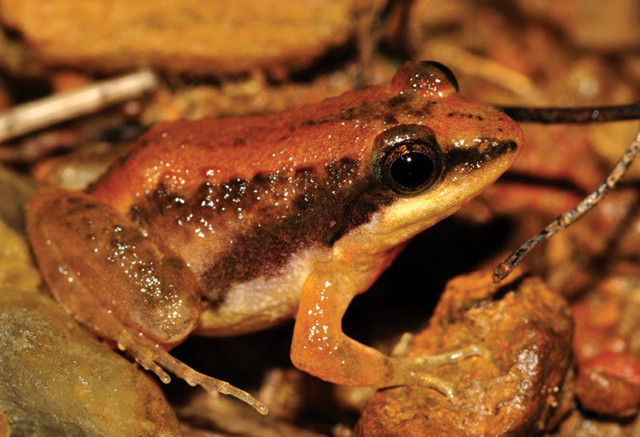
by Mary Caperton Morton Wednesday, February 13, 2019

Land connections, bridges and corridors may have enabled the dispersal of plants and animals, including frogs, among the landmasses around the Indian Ocean after the breakup of Gondwana. Credit: Seshadri.K.S., CC BY-SA 3.0
The positions of landmasses after the breakup of Gondwana during the late Mesozoic and early Paleogene are highly debated, especially the configurations of the Indian and Australian plates around the newly opening Indian Ocean. In a new study, the paleogeographic and genetic distributions of a group of frogs called Natatanurans were used to test the various post-breakup models — and the results bring additional clarity to the post-Gondwana puzzle.
The study, published in National Science Review, integrated phylogenomic data, biogeographic reconstructions and molecular dating methods to resolve the distributions and migrations of Natatanuran frog lineages among Laurasia and Gondwana — the two main supercontinents left after the breakup of Pangea. Scientists led by Zhi-Yong Yuan and Jing Che of the Chinese Academy of Sciences looked at the time period between 88 million and 55 million years ago, when the Indian Plate is thought to have broken from other remnants of Gondwana and slowly moved toward Asia. A popular model, known as the “Indian-biotic Ark,” suggests that when India eventually collided with Asia between about 65 million and 55 million years ago, it delivered an influx of Gondwanan plants and animals to Asia, with no biotic exchange occurring in the preceding 30 million years.
By focusing on the Natatanuran frog lineages, researchers instead found a complicated series of multidirectional dispersals over that 30-million-year period between Africa and Asia and between Asia and Madagascar. In each dispersal, they found that India appeared to provide a stepping stone that facilitated the migrations. The findings point to a close biogeographic association between Africa and the Indian Plate during the Late Cretaceous, which may have involved the opening and closing of various migration corridors, such as land bridges, that enabled prolonged episodes of biotic exchange between Africa and Laurasia.
In contrast, the team found no evidence that Natatanuran frogs reached the Antarctica-Australia-New Guinea landmass via land bridges from either India or Madagascar during the Late Cretaceous. Instead, Natatanuran frogs appear to have first reached Australia during the Eocene or later.
© 2008-2021. All rights reserved. Any copying, redistribution or retransmission of any of the contents of this service without the expressed written permission of the American Geosciences Institute is expressly prohibited. Click here for all copyright requests.